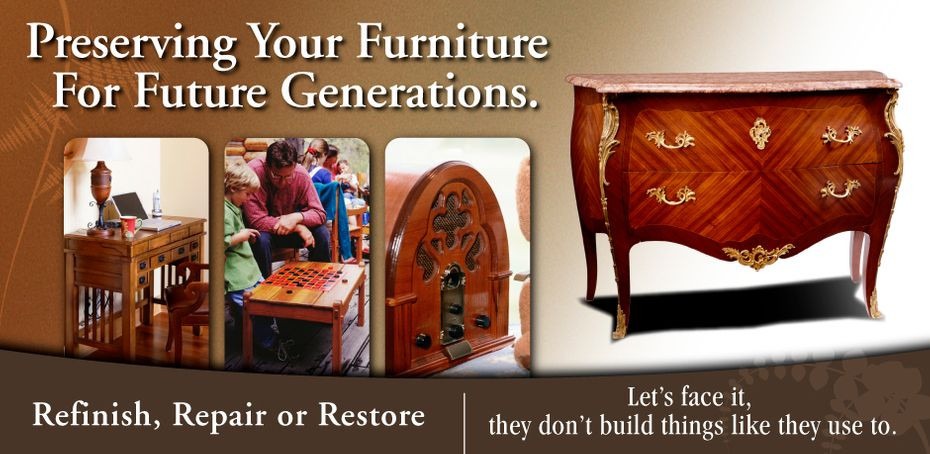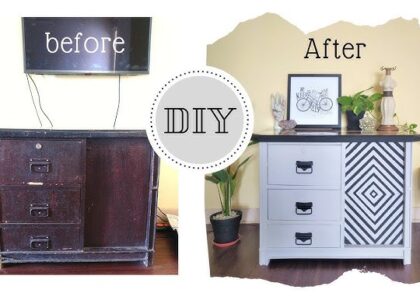The Art of Furniture Restoration: Why Restoring Antique Pieces Can Add Value to Your Home
Antique furniture restoration is a craft that has stood the test of time, quite literally. In today’s world of mass-produced, disposable furnishings, there is a growing appreciation for the fine craftsmanship, durability, and historical significance of antique pieces. If you’re someone who treasures the past or simply wants to add distinctive character to your home, restoring antique furniture can be a rewarding endeavor that also enhances the value of your property.

Why Restore Antique Furniture?
Restoring antique furniture is not only about preserving history but also about improving the aesthetic and functional value of your home. Antique pieces often come with unique designs and craftsmanship that cannot be replicated in modern furniture. When restored properly, they can serve as conversation starters, focal points, or even increase the monetary value of your home. Additionally, restoration can be a more sustainable choice, promoting recycling and environmental consciousness in an era where sustainability is key.

The Benefits of Restoring Antique Furniture
- Preservation of Historical Value: Many antique pieces have stories behind them. Restoring them keeps this history alive, allowing future generations to appreciate the past.
- Eco-Friendly: By restoring old furniture, you reduce the demand for new materials and promote environmental sustainability.
- Personalization: Restoration allows you to customize the piece, either by preserving its original charm or by giving it a modern twist while maintaining its vintage essence.
- Financial Value: Properly restored antique furniture can significantly increase in value, especially if the piece is rare or historically important.

How Furniture Restoration Can Add Value to Your Home
Adding antique furniture to your home does more than just enhance its aesthetic appeal; it can also improve its market value. Here’s how:
1. Unique Design
Antique furniture is often unique, making your home stand out with one-of-a-kind pieces. These items often feature hand-carved details, intricate inlays, and rich finishes that are rarely found in modern furniture.
2. Durability and Craftsmanship
Antique furniture was made to last. The solid wood, hand-carved designs, and high-quality materials mean that restored pieces can last for generations. Unlike modern furniture, which can deteriorate within a decade, restored antiques can become lifelong investments.
3. Financial Appreciation
Antiques, when restored properly, often appreciate in value. A well-preserved piece from a renowned craftsman or a certain era can fetch a high price at auctions or resale markets. Adding these restored pieces to your home can make it more appealing to potential buyers if you ever decide to sell.

The Restoration Process: What You Need to Know
Restoring antique furniture is an intricate process that requires patience, skill, and attention to detail. It involves various steps such as:
1. Assessment and Cleaning
The first step is to assess the condition of the furniture. This involves identifying any cracks, scratches, or damages to the structure. A thorough cleaning is done to remove dirt, dust, and old polish, preparing the surface for restoration.
2. Repair and Stabilization
Cracks, loose joints, or broken parts are repaired during this phase. If necessary, replacement parts are fabricated to match the original. The goal is to maintain as much of the original structure as possible while ensuring the piece is stable and functional.
3. Refinishing
Refinishing is often the most time-consuming part of the restoration process. It involves sanding down the surface and applying new stain or paint. For antiques, the refinishing process focuses on preserving the original look while enhancing its appeal.
4. Upholstery Restoration
If the piece has fabric, such as a chair or sofa, upholstery restoration is essential. This may involve replacing old fabric with a similar pattern or style, or in some cases, reupholstering to bring the piece up-to-date while preserving its original character.

Where to Find Restorable Antique Furniture
Now that you know the benefits of restoring antique furniture, the next step is finding pieces worth restoring. Here are some common places to find them:
- Flea Markets and Estate Sales: These venues are excellent for finding hidden gems at affordable prices. Be prepared to negotiate and look for pieces with good bones.
- Antique Stores: Although prices may be higher, antique stores often have a wide selection of quality items.
- Online Marketplaces: Websites like eBay and Craigslist can offer great deals, but it’s essential to ensure the seller is reputable and the furniture is authentic.
Final Thoughts
Restoring antique furniture offers a unique opportunity to blend the past with the present. These pieces provide character and charm that modern furniture simply cannot replicate. More importantly, investing time and effort into restoring antiques not only enhances your home’s aesthetic appeal but can also add significant value to your property. Whether you’re a collector or someone looking to add unique elements to your interior, antique furniture restoration is a gratifying process that pays off in more ways than one.
If you want to read more information about how to boost traffic on your Website just visit –> The Insider’s Views.






